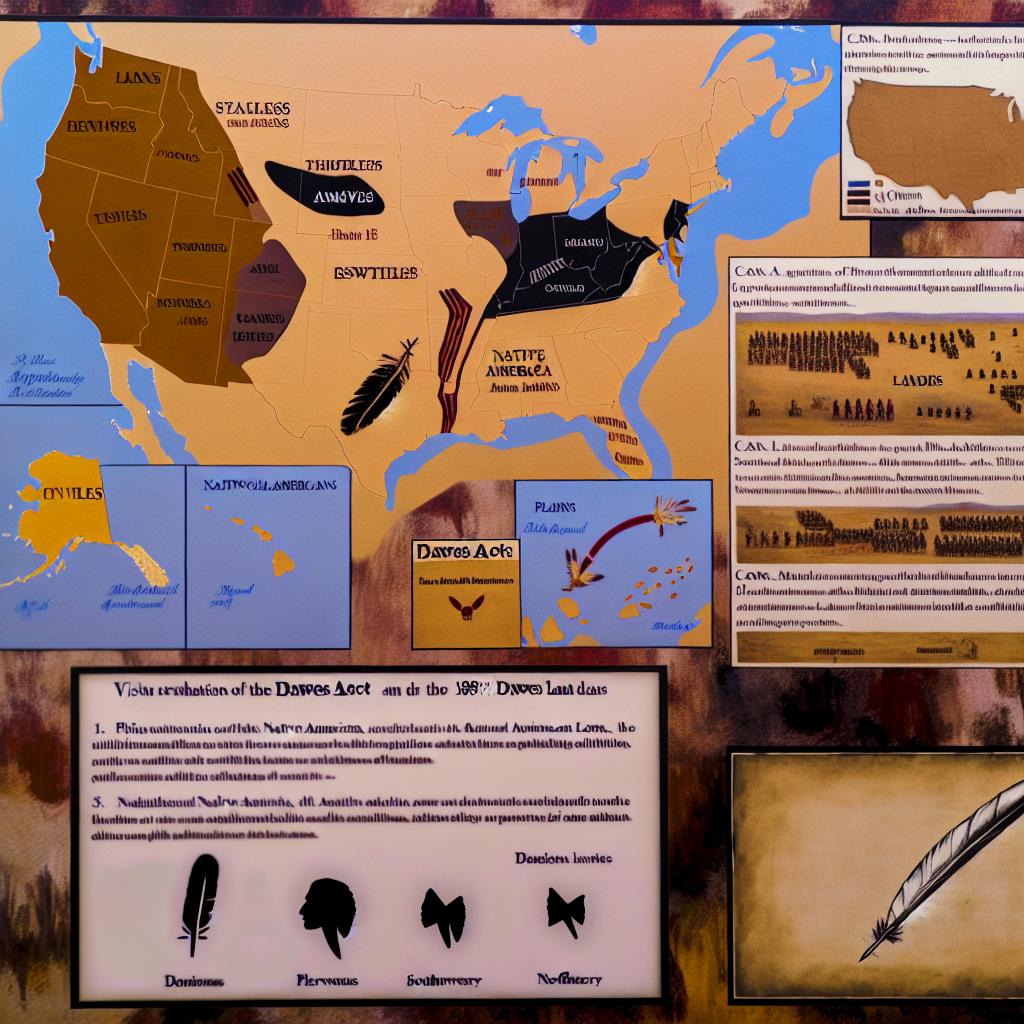Introduction to the Dawes Act
The Dawes Act, also known as the General Allotment Act, was enacted by the United States Congress in 1887. It was a significant piece of legislation with the primary aim of assimilating Native Americans into American society. The act sought to achieve this by transforming the communal tribal land ownership system into an individual land ownership model. The underlying objective of the Dawes Act was not only to promote the adoption of agriculture as a primary occupation among Native Americans but also to integrate them into the broader fabric of American economic life. Through such integration, it was hoped that Native Americans would gradually assimilate into the social and cultural norms of the wider American society.
Redistribution of Land
The Dawes Act brought about a remarkable change in the ownership and distribution of land previously held by Native American tribes. Under this legislation, the tribal lands were divided into individual allotments for Native American families and individuals. Typically, each Native American household head was allocated a parcel of land, usually measuring about 160 acres. Single adults were given 80 acres, while minors received 40 acres. The intention behind this allocation was to instill a sense of private property ownership among the Native American population. To manage and oversee this transition, the U.S. government held these parcels of land in trust for 25 years. After this period, the owners were given the option to sell their land if they so wished.
Impact on Land Ownership
The impact of the Dawes Act on Native American land ownership was profound and far-reaching. Before the implementation of the Dawes Act, tribes collectively owned an estimated 150 million acres of land. However, by the time the allotment process concluded in 1934—eventually overturned by the Indian Reorganization Act—the landholdings of Native Americans had dramatically decreased to about 48 million acres. This substantial reduction in land was primarily attributed to the sale of ‘surplus’ land to non-Native settlers and the loss of land through taxation and other economic pressures. The fragmentation of tribal lands eroded the wealth base of Native communities and significantly altered the landscape of Native American land ownership.
Economic and Cultural Consequences
The Dawes Act led to several economic consequences that adversely affected Native American communities. Many Native Americans were unprepared for the agricultural lifestyle that the Act attempted to impose upon them. A significant number lacked the necessary resources, tools, and training to maintain their allotments successfully. Faced with ongoing economic challenges, many Native Americans sold their allotments at markedly undervalued prices. This transaction often led to increased poverty levels as individuals struggled to adapt economically without their traditional support systems.
Alongside the economic implications, the cultural consequences of the Dawes Act were equally significant. The design of the Act initiated a disruption in the communal structure of tribal land ownership, undermining traditional forms of tribal governance and eroding established cultural practices. Moving from a communal to an individual land ownership model disrupted the strong, enduring connections tribes had with the land—connections that were integral to their identities and social structures. This shift not only fragmented community ties but also led to a gradual erosion of Native American identity as tribal cohesion weakened.
Attempts at Reconciliation
Recognizing the adverse outcomes of the Dawes Act, Congress passed the Indian Reorganization Act in 1934. This piece of legislation sought to address and reverse some of the negative impacts of the Dawes Act. It ended the practice of allotment and took steps toward restoring some degree of tribal self-governance. While the Indian Reorganization Act marked the beginning of a shift towards acknowledging the rights and governance of Native American tribes, the long-term effects of the Dawes Act continued to be felt within Native communities for generations. Attempts at reconciliation recognized historical injustices and sought to rebuild the social and economic fabric of Native societies.
To understand more profoundly how the Dawes Act has continued to influence Native American communities, further exploration can be made through resources such as those offered by cultural institutions like the National Museum of the American Indian. Such resources provide in-depth views of the ongoing impact and present-day narratives surrounding the historical context and legacy of policies like the Dawes Act in Native American communities.
Through this examination of the Dawes Act and its ramifications, we gain insights into a critical aspect of American legislative history and its enduring impact on Native American societies. This understanding encourages continued reflection and informed discussion on how historical policies have shaped the modern landscape of Native American life, prompting initiatives toward restoration and equity aligned with respect for cultural heritage and identity.

